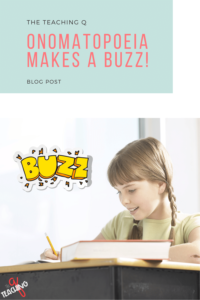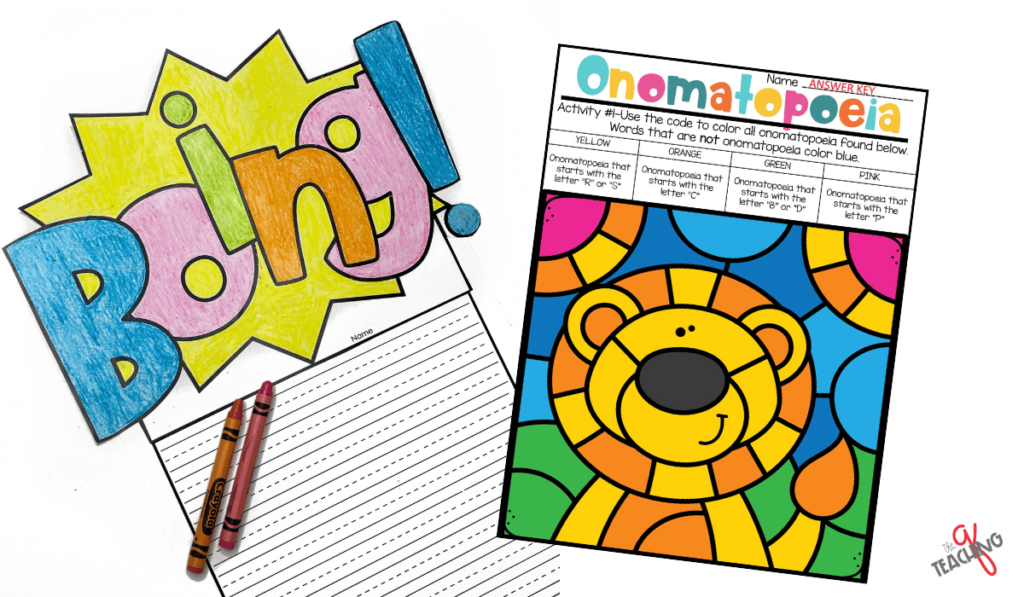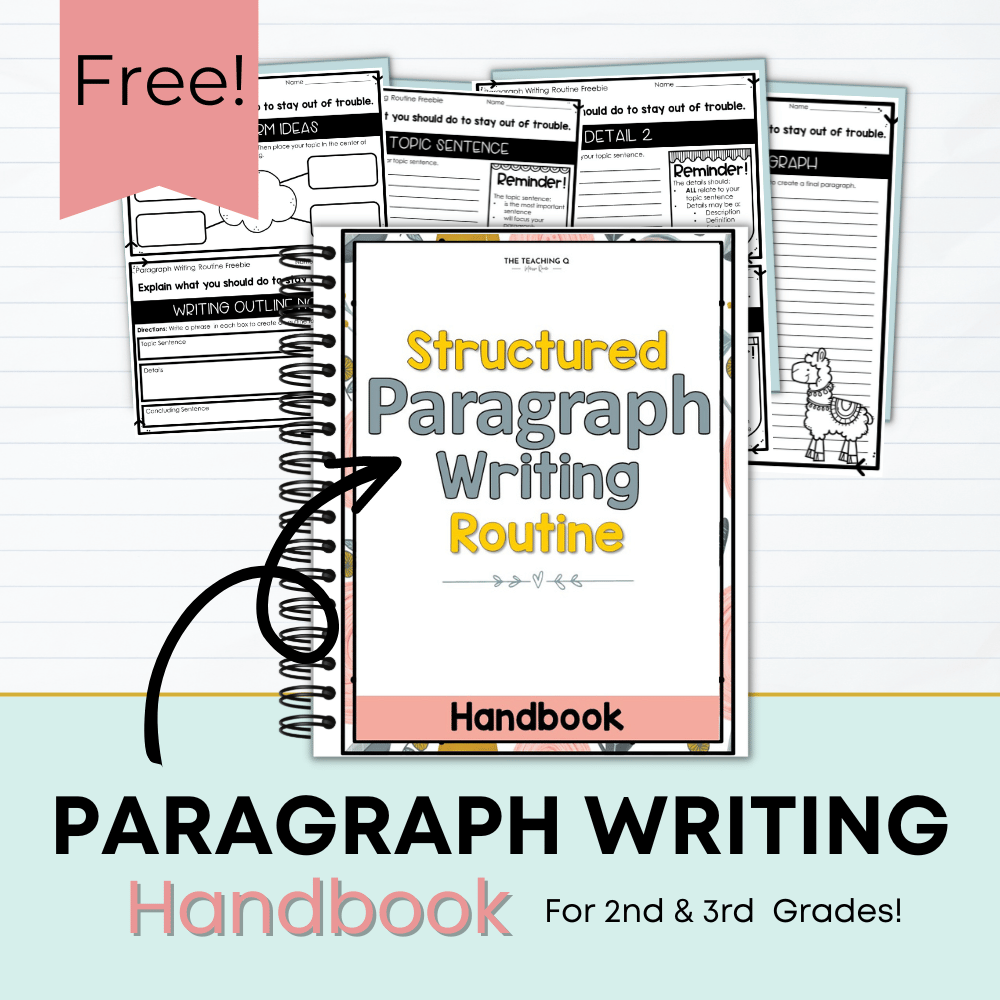Are your students excited to use Onomatopoeia-figurative language while speaking but then fall short when it comes time to use figurative language in their writing?
Teaching young writers figurative language skills is a fun, exciting, and engaging lesson. Not only for the teacher but the students as well. 🙂
Well, until it comes time actually to use Onomatopoeia-figurative language in their writing.
Here’s the scenario: You delivered a great lesson that all the students loved. The whole class had onomatopoeia spewing out left and right!
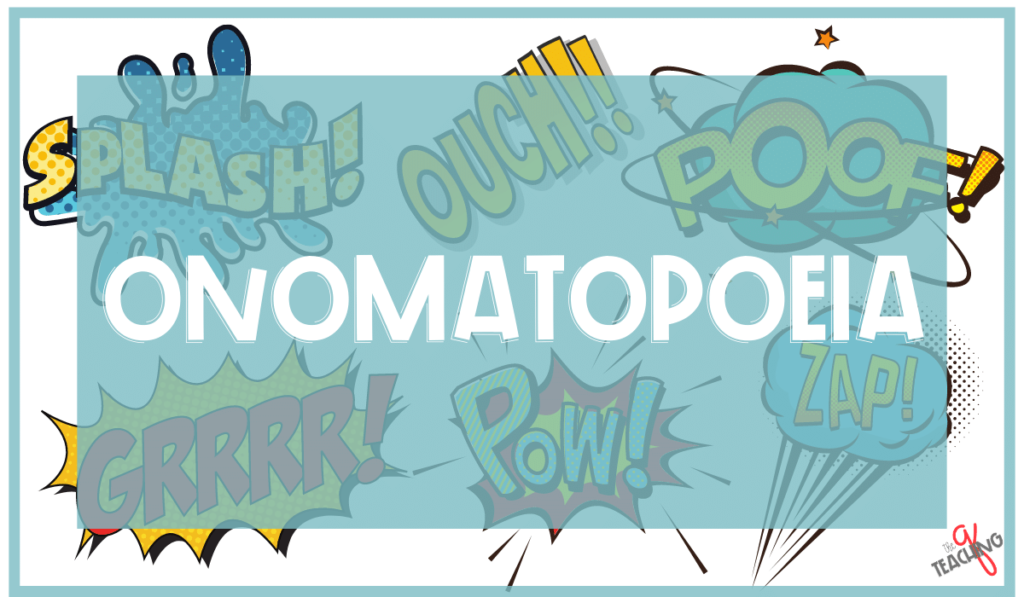
Bam! Crash! Splat!
What a beautiful day it was.
Or NOT!
Yes, just when you thought the kids were motivated and excited to use their newfound skill with onomatopoeia, it didn’t transfer over to their writing.
Disheartening as it may be, I have a solution for you. But first, let’s go over some basics.
What is Onomatopoeia?
Onomatopoeia is a form of figurative language. It is the process of creating a word phonetically imitating a sound.
For our young learners, I used Your Dictionary definition: a word that describes a sound and mimics the object’s sound or action. With a few examples in my best mimicking voice, the students have the idea and are eager to join in the fun.
By using onomatopoeia, words are POP! BUZZ! PLOP!
As the class gets more comfortable with the idea, we start creating a class chart of Onomatopoeia words. (They don’t have to know that I keep an extensive list on my desk to reference.)
Why do we teach Onomatopoeia-Figurative Language?
Onomatopoeia and other figurative language skills are taught to strengthen their reading and writing skills. (The two subjects always go hand in hand.)
Identifying Figurative Language- Onomatopoeia in Print
Many students easily identify figurative language and can most often explain how it added to their understanding of the text. The tricky part is transferring the reading comprehension skill over to their writing.
When it comes to writing, students typically use onomatopoeia isolated. Stretching their skill level to the sentence level and then to their creative writing is where we, as educators, can give a gentle push toward mastery.

Using Figurative Language with Onomatopoeia in Sentences
To slowly scaffold my teaching of figurative language skills, then present onomatopoeia images to the students. With partners, the students create a sentence to match the image. Once everyone has verbalized a sentence with the correct usage, the student writes the sentence.
This step may seem simple and unnecessary, but trust me, it is 100% necessary. That is if you want the students to use the figurative language outside of this one lesson. Yeah, I know you agreed.
From here, I hold the students a little more accountable, with each student forming four to five sentences using onomatopoeia. Just as before, the student still has the images as support to visualize and possibly “hear” the figurative language in their head.
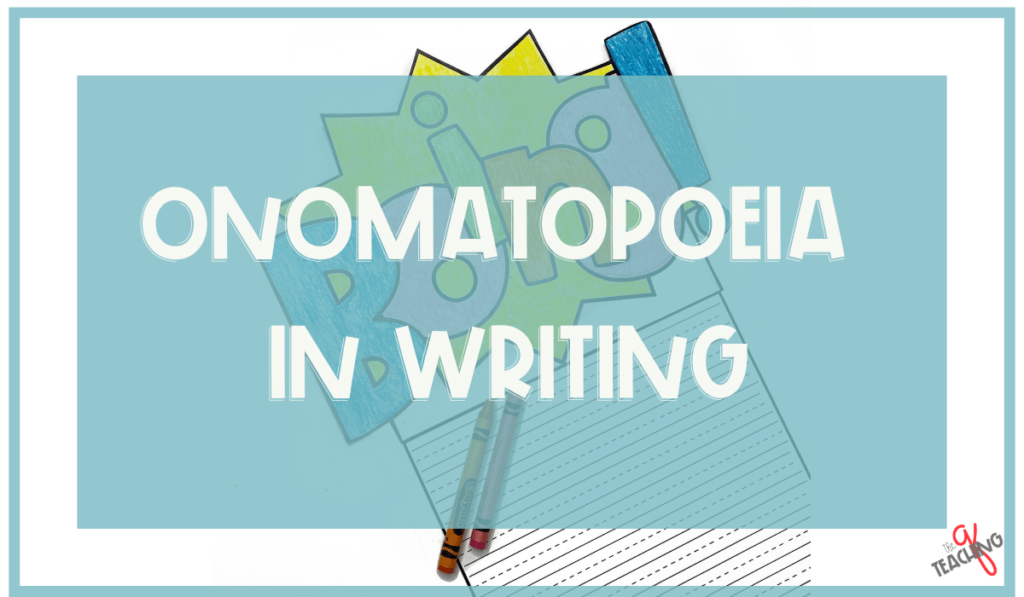
Using Onomatopoeia for Descriptive Writing
Once the students are more than comfortable writing sentences with onomatopoeia, I introduce using figurative language to lead to narrative writing. This is a two-step process.
Step 1
Here’s the fun part. I read the beginning of a story that uses onomatopoeia, and then I stop!
In no time at all, the students say, “but what happened next?” I’ve got them right where I need them. Instantly the students connect the need to attract your reader. The students are more than eager to apply their new skills to their writing.
Step one is completed. (Ding!)
Step 2
I take one sample of the student’s writing, with the name blacked out, of course, to read aloud. Make sure to read a section of the writing that is NOT the introduction but can still benefit by adding onomatopoeia.
Then, I ask the students to visualize what is happening as I read the sampling for a second time, but with the onomatopoeia included.
Instantly, the story comes to life.
The students will quickly agree. So now it’s time for them to modify one small section of a narrative they have already written.
Finally, students are ready for a writing prompt, which will lead them to use onomatopoeia on their own. BAM! (mic drop)
While you’re at it, you may want to check out my FREE Structured Paragraph Handbook, which will guide you and your students through the steps needed to create the perfect paragraph.
If you want to take your students through the steps outlined above, you can find my complete Onomatopoeia Writing Unit here. (It will save you time and walk you through all the steps.)

Are your students struggling and making very little progress in writing? Or maybe they’re unmotivated or a reluctant writer? If so, I’ve got your back.
Yes…I…Do!
Let me share my secret sauce when it comes to teaching writing to elementary students.
It’s the Sentences, Paragraphs, and Essays: OH, MY! E-book.
Click this link to learn more about how the E-Book can transform your students’ chicken scratch, hap-hazard writing into strong, effective, glorious writing!
Happy Teaching My Friends,
Melissa
